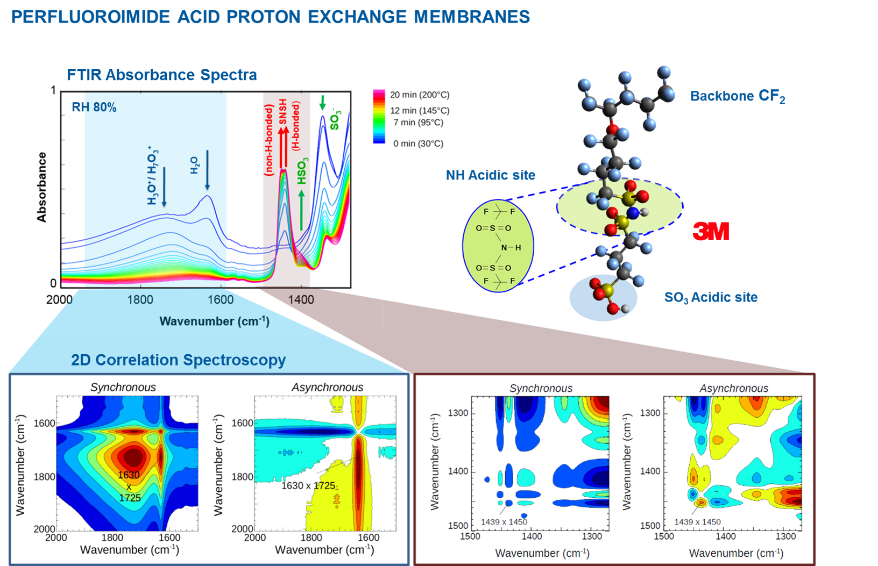Institute for Electronic Structure Dynamics
Towards Advanced Performance Proton Exchange Membranes
For effective, high performance proton exchange membranes (PEMs), the core components of fuel cells (FCs), there is an increasing need to operate well under hot and dry conditions whilst maintaining the stability and low production costs. NAFIONTM membrane, the most frequently commercially used PEM in FCs industry, is very stable and efficient at proton transport at high relative humidity, however its performance degrades at lower humidity and higher temperature conditions.
Hybrid materials, ion exchange membranes containing inorganic nanoparticles, have shown significant changes in the pores and channels within the membranes that influence their physical and proton transport properties. Other developments go in the direction of synthesizing advanced PEMs with multi acid groups. Perfluoroimide acid (PFIA) is one of these multi-acid PEMs recently developed by 3M Company’s Fuel Cell Components Group.
We implement in situ IR techniques (MIR and FIR regions) in conjunction with 2D correlation spectroscopy and proton conductivity measurements to better understand the behavior of water and its hydrogen-bonded network confined inside the nano-sized water channels of the PEMs during transition to dryer conditions. Two-dimensional (2D) correlation spectroscopy based on cross correlation function of time-resolved infrared spectra provides additional in-depth analysis of the correlation and sequence of the events as well as improved spectral resolution.
In-situ infrared dynamics study with 2D correlation spectroscopy.
FTIR Absorbance Spectra: Rehydration of PFIA from the temperature induced dehydrated state (200⁰C, 0.1% relative humidity, shown in red) to the fully hydrated state (80% relative humidity and room temperature) shown in blue.
2D Correlation Spectroscopy: Synchronous and asynchronous maps of 3M PFIA reveal the sequential process of the hydration and dehydration of PFIA in a conclusive model.
References:
- Puskar, E. Ritter, U. Schade, M. Yandrasits, S. J. Hamrock, M. Schaberg, and E. F. Aziz, Infrared dynamics study of thermally treated perfluoroimide acid proton exchange membranes, Phys. Chem. Chem. Phys., (2017). DOI: 10.1039/C6CP06627E
- Noda, Two-dimensional infrared (2D IR) spectroscopy. Theory and applications, Applied Spectroscopy, (1990). DOI: 10.1366/0003702904087398
- D.O. Bawagan, S.J. Hamrock, M. Schaberg, I. Yousef, E. Ritter, U. Schade. Far-infrared Studies on Nafion and Perfluoroimide Acid (PFIA) and their Alkali Salts. Vib. Spec. (2014) http://dx.doi.org/10.1016/j.vibspec.2014.05.010

